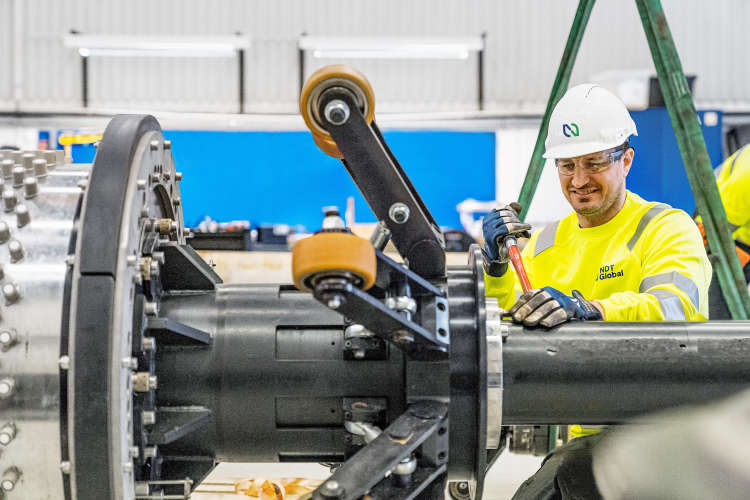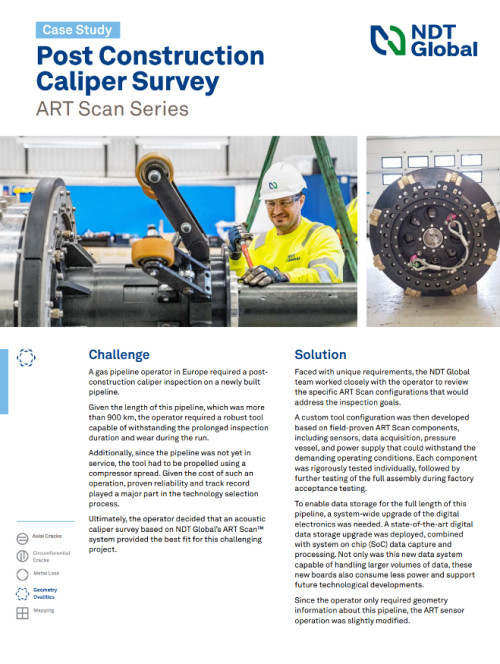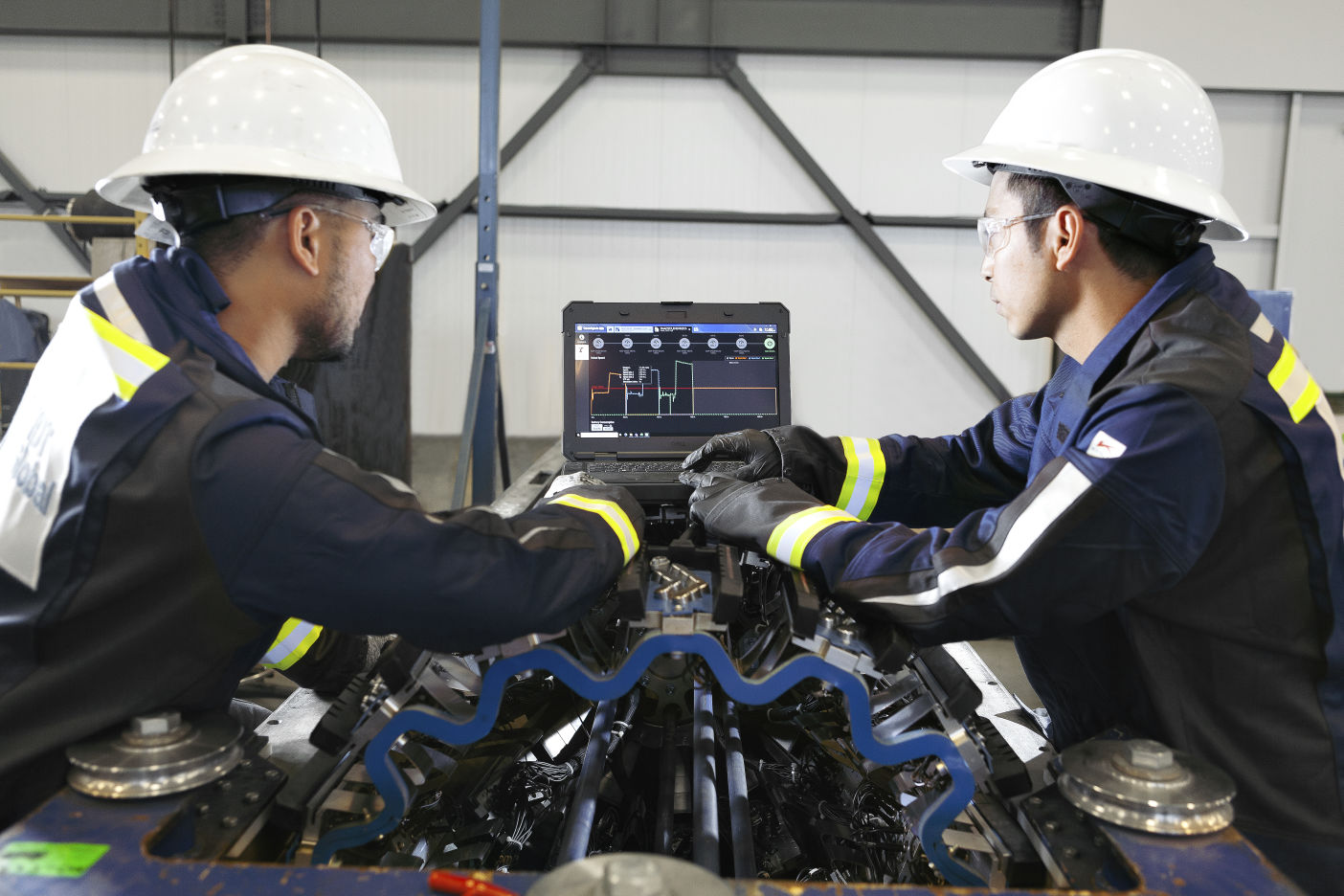Faced with unique requirements, the NDT Global
team worked closely with the operatorAn entity or organization responsible for the operation, management, and maintenance of a pipeline system. The operator is entrusted with ensuring the safe, rel… to review
the specific ART Scan configurations that would
address the inspectionThe systematic process of visually examining, testing, or monitoring pipeline components to assess their condition, integrity, and compliance with regulatory re… goals.
A custom toolGeneric term signifying any type of instrumented tool or pig. configuration was then developed
based on field-proven ART Scan components,
including sensors, data acquisition, pressure
vessel, and power supply that could withstand the
demanding operating conditions. Each componentAny physical part of the pipeline, other than line pipe, including but not limited to valves, welds, tees, flanges, fittings, taps, branch connections, outlets,…
was rigorously tested individually, followed by
further testing of the full assembly during factory
acceptance testing.
To enable data storage for the full length of this
pipeline, a system-wide upgrade of the digital
electronics was needed. A state-of-the-art digital
data storage upgrade was deployed, combined
with system on chip (SoC) data capture and
processing. Not only was this new data system
capable of handling larger volumes of data, these
new boards also consume less power and support
future technological developments.
Since the operatorAn entity or organization responsible for the operation, management, and maintenance of a pipeline system. The operator is entrusted with ensuring the safe, rel… only required geometry
information about this pipeline, the ART sensor operation was slightly modified.
Instead of a frequency sweep (or chirp) to activate
resonances in the pipe wall, a shorter signal can
be used to provide a pulse-echo reading.
This reading reflects the stand-offThe distance between a pipeline and external objects or structures. This measure of the separation maintained between the pipeline and other elements ensures sa… between the
sensor and the pipeline’s internal surface, which
is derived from the time-of-flight information.
The pulse-echo signal provides high-accuracy
geometry signal which is not affected by toolGeneric term signifying any type of instrumented tool or pig. speed or the dynamic behavior of a sensor arm as
used by mechanical caliper tools.
The collection of stand-off readings was used
to virtually re-position the ILI tool to the center of the pipeline and accurately report any out-of-roundness, dents, and deformations which
exceeds measurement specifications.
ART Scan tools are typically deployed on
a wheeled suspension system to ensure centralization and rotation of the toolGeneric term signifying any type of instrumented tool or pig.. Given the
large diameter of the tool, the calculated load on
each wheel would exceed earlier deployments. For
this reason, a new wheel design was developed
and subjected to full-scale load testing,
simulating the full length of the pipeline and even
severe girth weldA girth weld is a type of weld used in pipelines to join two sections of pipe together circumferentially. It is commonly used in the construction of long-distan… protrusions.
The testing concluded that the wheels showed
no signs of wear even though the testing program
was designed to be much more severe than
the actual run conditions. The wheels have
demonstrated their reliability and durability
during long runs (more than 900 km) in multiple
inspections with no signs of wear on the wheel
tread or bearings.




